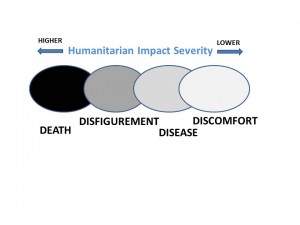Solving global poverty? It’s a pretty big ask. Surely if it was that easy, someone would have done it by now, right? And aren’t there hordes of smart people working on that problem already? I mean, what about progress towards achieving the Millennium Development Goals? At ‘Give A Billion’, we do recognise that much good work has been, and continues to be done on tackling the problem of poverty worldwide. But consider for a moment, the global problem-solving power of a brand new IDEA.
Imagine just how different things might be today, if the first person ever to invent the wheel had been able to share that simple and brilliant idea with everyone – globally and immediately. Today, the internet is the world’s best global delivery mechanism for such powerful new ideas. You just have to have a good one. And that’s what we think we have. A REALLY good one, in fact. But why don’t YOU be the judge of that? If you want to discover what it’s all about, you can start with the image below. It sits right at the heart of all our poverty thinking – just like the hub of a wheel…
But first, a quick word to those who might initially be tempted to quickly dismiss our own efforts, without even understanding them. We would first politely ask this question: When it comes to overcoming world poverty, are we all, collectively, already going about things the best way humanly possible? Is there no room in our minds to consider the prospect of a better way of thinking and working together?
We think there is. It is called the “7 Layer Poverty Model“. You can find out all about it on this web site. Functioning like the hub of our conceptual wheel, it sits at the heart of our 3 step plan to solve global poverty, namely:
- Define poverty
- Map poverty
- Focus the fixers
The 7 Layer Poverty Model is the core concept that links these 3 steps together and integrates them all. To help any remaining sceptics to at least hear us out, let’s consider the phrase “5 a day”. What does that phrase mean to you? For hundreds of millions of people around the world (in their own language of course), that phrase means something like: “We should all ideally aim to eat 5 portions of fruit and vegetables every day, because it is good for us”.
Now, hold on just a second, where exactly did that phrase start? People have been eating fruit and vegetables (among other things) for thousands of years before that phrase. Who decided on 5? And how did they persuade us all to believe them anyway? And will someone please tell me EXACTLY what a “portion” is?!
The fact is, eating a mix of fruit and vegetables each day probably is a pretty good idea for the health of most of us, if we have the option. In that sense, it’s nothing new. Before the idea became established, there was perhaps a broad awareness about the general health benefits of various types of fruit and vegetables. We all knew we “should” eat them, but there were nagging questions, which confused the issue for us and blurred the lines of decision. How much? Of what type and variety. And how often? When people get confused, they tend to make poorer choices. Better education of the masses was required. In that particular case, regarding the somewhat complex matter of personal nutrition.
Then along came some bright spark and told us the MODEL ANSWER was FIVE! Five portions of fruit and vegetables every day was the magic number. Years later, this idea has caught on very well among more developed nations. All kinds of produce suppliers now seek to promote their products as “one of your 5-a-day”. The model has become part of every day life and conversation for many of us. We all automatically know what they mean, without any further explanation. Or at least, we think we do.
But there are a few problems with the model, admittedly. Some of them quite serious. Do we know at what AGE a child should begin their 5-a-day regime? Are 5 portions of grapes as ‘good’ as 5 different portions of leafy green vegetables? Do fast food fries and potato chips count the same as broccoli? And is a portion driven by size, or weight? There are also the issues of food allergies, processed versus fresh fruit and vegetables, the starch levels in some vegetables, the nutritional impact of how the vegetables are actually cooked, the relative merits of cooked versus raw vegetables, and so on.
Whoever came up with the 5-a-day model was probably aware of these potential issues too. However, we assume that they decided that the BENEFITS of standardising on a single nutrition model of 5-a-day, outweighed the disadvantages of people not properly understanding all the details. The purpose of such models is to simplify reality to such a level that most people can understand it.
This is the same principle we are promoting in the 7 Layer Poverty Model. It is a tool in the service of solving global poverty. It is recognised as a simplification of the real world, but it is a very useful one. It is based on both scientific knowledge and common sense. It helps convert a rather vague and abstract general notion of ‘poverty’, into something definite that even 5 year olds around the world can relate to.
They know what it is to feel thirsty, or hungry. They understand what clothes are and what having a place to live means to them. They know what it means to get ill and to get better. They will also have some understanding of what it means to be forced to do something they disagree with and what it means to feel included – or left out of a group. All these basic ideas have their own place forming the 7 Layers of our Poverty Model.
Poverty itself is a 7 letter word. We define it helpfully in 7 words. We have set out a compelling plan to solve it with only 7 words. The Model has 7 layers and identifies 7 key ‘stakeholders’ or ‘actors’ in overcoming more poverty sooner, with the same resources – or less. This unique Model stems from fresh and innovative thinking regarding solving global poverty, using Systems Thinking to help. The 7 Layer Poverty Model remains the conceptual hub, but there is a whole ‘wheel’ of supporting ideas to work with it. And what better way to help end the systemic cycle of poverty, than with a conceptual wheel? To discover more, why not start with our ‘Best 7 Ideas’ page?
Our guess is that hundreds of millions of people around the world now know something of what “5-a-day” is meant to mean. Our goal is to help a billion people understand the 7 Layer Poverty Model and how that understanding translates into solving global poverty: overcoming more poverty, more quickly and more effectively. Now you’re here, YOU can play your own big part in that.
So we thank YOU personally for being…
One in a BILLION!



























